What'sNEW
August - December 2016
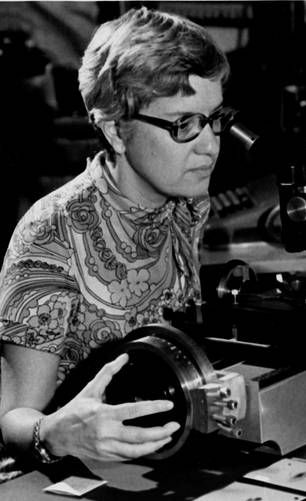 The history of science teaches us that many theories must ultimately be modified, so it is likely that some of our ideas concerning the big bang are wrong. — Vera Rubin (1928-2016), who observed that galaxies rotate under the gravitational influence of unseen matter.
The history of science teaches us that many theories must ultimately be modified, so it is likely that some of our ideas concerning the big bang are wrong. — Vera Rubin (1928-2016), who observed that galaxies rotate under the gravitational influence of unseen matter.
 Vera Rubin Forced the Cosmological Theorists to Think Again, by James R. Hagerty, The Wall Street Journal, 30 Dec 2016. Vera Rubin Forced the Cosmological Theorists to Think Again, by James R. Hagerty, The Wall Street Journal, 30 Dec 2016.
 George Nickas comments, 05 Jan 2017. Jack Ritter sends a late rejoinder, 04 Aug 2017. George Nickas comments, 05 Jan 2017. Jack Ritter sends a late rejoinder, 04 Aug 2017.
 The End and the Big Bang is a related local webpage. The End and the Big Bang is a related local webpage.
 ...Rosetta's Comet Contains Ingredients for Life, among the Top 10 stories of the year in Astrobiology, 26 Dec 2016. ...Rosetta's Comet Contains Ingredients for Life, among the Top 10 stories of the year in Astrobiology, 26 Dec 2016.
 Comets... and Comets... and  Comet Rendezvous have related info. Comet Rendezvous have related info.
 ...New Questions mentions pseudo-panspermia. ...New Questions mentions pseudo-panspermia.
 Long Window for Life on Mars: Hundreds of Millions of Years? by Mike Wall, Space.com, 14 Dec 2016. Long Window for Life on Mars: Hundreds of Millions of Years? by Mike Wall, Space.com, 14 Dec 2016.
 Life on Mars! has more. Life on Mars! has more.
 Thanks, Ronne McGhee. Thanks, Ronne McGhee.
 03 Jun 2017: ...an ancient, habitable lake environment ...for tens of thousands to tens of millions of years.... 03 Jun 2017: ...an ancient, habitable lake environment ...for tens of thousands to tens of millions of years....
The History and Philosophy of Origin Research was the subject of a 3-day conference in Tokyo last August. The new trend looks to be "messy chemistry." Meteorites may bring organics, but not more. The software problem is subordinated for now. Our impression remains that, "despite 60 years of effort," origin-of-life research has gotten nowhere.
 "Meta Musings on the Origins of Life", by Johnny Bontemps, Astrobiology (+SpaceDaily), 29 Nov 2016. "Meta Musings on the Origins of Life", by Johnny Bontemps, Astrobiology (+SpaceDaily), 29 Nov 2016.
 Thanks, Ronne McGhee. Thanks, Ronne McGhee.
 What Is Life? and What Is Life? and  The RNA World are related local webpages. The RNA World are related local webpages.
| 06 Dec 2016 |
What'sNEW about HGT  | | |
...We identified a 3-Mb insert of a feminizing Wolbachia genome that was recently transferred into the pillbug nuclear genome. ...Thus, bacteria-to-animal horizontal genome transfer represents a remarkable mechanism underpinning the birth of sex chromosomes.
 Birth of a W sex chromosome by horizontal transfer of Wolbachia bacterial symbiont genome, Sébastien Leclercq, Julien Thézé et al., doi:10.1073/pnas.1608979113, PNAS, 27 Dec 2016. Birth of a W sex chromosome by horizontal transfer of Wolbachia bacterial symbiont genome, Sébastien Leclercq, Julien Thézé et al., doi:10.1073/pnas.1608979113, PNAS, 27 Dec 2016.
 Viruses and Other Gene Transfer Mechanisms is the main related local webpage. Viruses and Other Gene Transfer Mechanisms is the main related local webpage.
 A Workshop on Searching for Life Across Space and Time, sponsored by The Space Studies Board of the National Academies of Sciences, Engineering, and Medicine, in Irvine CA, 5-6 Dec 2016. A Workshop on Searching for Life Across Space and Time, sponsored by The Space Studies Board of the National Academies of Sciences, Engineering, and Medicine, in Irvine CA, 5-6 Dec 2016.
 If You're Looking For Alien Life, How Will You Know If You've Found it? by Nell Greenfieldboyce, NPR Morning Edition, 05 Dec 2016. If You're Looking For Alien Life, How Will You Know If You've Found it? by Nell Greenfieldboyce, NPR Morning Edition, 05 Dec 2016.
Evidence for past life on Mars comes from a reinterpretation of images taken by the Spirit rover in Gusev crater in 2007. "Nodular and mm-scale digitate opaline silica structures" (left image, scalebar = 5 cm) are now seen as "remarkably similar [to] features within active hot spring/geyser discharge channels at El Tatio in northern Chile, where halite-encrusted silica yields infrared spectra that are the best match yet to spectra from Spirit" (right image, same scale).
 Silica deposits on Mars with features resembling hot spring biosignatures at El Tatio in Chile, by Steven W. Ruff and Jack D. Farmer, doi:10.1038/ncomms13554, Nature Communications, online 17 Nov 2016. Silica deposits on Mars with features resembling hot spring biosignatures at El Tatio in Chile, by Steven W. Ruff and Jack D. Farmer, doi:10.1038/ncomms13554, Nature Communications, online 17 Nov 2016.
 Thanks, Stan Franklin. Thanks, Stan Franklin.
 On Mars, Looks Can Be Deceiving [opposing view], by Dirk Schulze-Makuch, airspacemag.com, 16 Dec 2016. On Mars, Looks Can Be Deceiving [opposing view], by Dirk Schulze-Makuch, airspacemag.com, 16 Dec 2016.
 Life on Mars! has other evidence, including ALH84001 and the Viking LR experiments. Life on Mars! has other evidence, including ALH84001 and the Viking LR experiments.
We think an even more compelling fossil was photographed in 2004 in Mars' Meridiani Planum:
 A fossil on Mars resembles one on Earth, posted 28 Oct 2015. A fossil on Mars resembles one on Earth, posted 28 Oct 2015.
| 30 Nov 2016 |
What'sNEW about HGT  | | |
Here, we show that the transfer of the symbiosis island... to other rhizobia is enhanced by plant flavonoids that also serve as signals to initiate the symbiotic process. These data suggest that eukaryotic hosts are involved in bacterial horizontal gene transfer to promote symbiotic interactions between rhizobia and legumes. (Plants enhancing HGT among bacteria to benefit the plants — that's impressive!)
 Plant nodulation inducers enhance horizontal gene transfer of Azorhizobium caulinodans symbiosis island, by Jun Ling, Hui Wang et al., doi:10.1073/pnas.1615121113, PNAS, 29 Nov 2016. Plant nodulation inducers enhance horizontal gene transfer of Azorhizobium caulinodans symbiosis island, by Jun Ling, Hui Wang et al., doi:10.1073/pnas.1615121113, PNAS, 29 Nov 2016.
 Thanks, Google Alerts. Thanks, Google Alerts.
 Viruses... has lots more about HGT. Viruses... has lots more about HGT.
...the standard model of cosmology is merely a precise account of our ignorance — Avi Loeb, Chairman, Astronomy Department, Harvard University:
 Good data are not enough, Nature, 03 Nov 2016. Good data are not enough, Nature, 03 Nov 2016.
 The End and the Big Bang is a related local webpage. The End and the Big Bang is a related local webpage.
 Biologists long ago accepted that microbes can swap DNA, and they are now coming to terms with rampant gene flow among more complex creatures. ...just a few introgressed genes could have a very strong effect. Hybridization among animals may be as widespread and consequential as it is among plants.
Biologists long ago accepted that microbes can swap DNA, and they are now coming to terms with rampant gene flow among more complex creatures. ...just a few introgressed genes could have a very strong effect. Hybridization among animals may be as widespread and consequential as it is among plants.
 Shaking up the Tree of Life by Elizabeth Pennisi, Science, 18 Nov 2016. Shaking up the Tree of Life by Elizabeth Pennisi, Science, 18 Nov 2016.
 The Tree of Life is a related local webpage. The Tree of Life is a related local webpage.
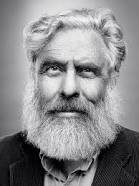 Most people accept evolution; even creationists accept microevolution. If we start getting macroevolution in the lab, then they'll accept the macroevolution.... The scientists should be saying, "Prove it. Do it in the lab." — Harvard Medical School Professor of Genetics George Church, 2007
Most people accept evolution; even creationists accept microevolution. If we start getting macroevolution in the lab, then they'll accept the macroevolution.... The scientists should be saying, "Prove it. Do it in the lab." — Harvard Medical School Professor of Genetics George Church, 2007
 Life, John Brockman, ed., Harper Perennial, 2016 (p 140, emphasis in source text). Life, John Brockman, ed., Harper Perennial, 2016 (p 140, emphasis in source text).
 Evolutionary Progress? Evolutionary Progress?  The Evolution Prize and The Evolution Prize and
 Testing Darwinism... are related local webpages. Testing Darwinism... are related local webpages.
 Does Micro- Explain Macro-? and Does Micro- Explain Macro-? and
 Macroevolutionary Progress Redefined... have related discussion. Macroevolutionary Progress Redefined... have related discussion.
 Everywhere we went he received standing ovations. Sometimes even before he spoke, remembers James Lovelock's wife, Sandy, after his tour of American universities in 2006. It seems that Gaia has achieved respectability and Lovelock's attention to the biosphere has become mainstream. How stabilizing Gaian processes may have originated still puzzles even Gaia's adherents, but we think this concern is misplaced. More importantly, stabilizing feedback loops have limits and reach tipping points. These and the imminent danger of a rapidly changing environment are well emphasized in a 2009 biography by veteran science writers. We were pleased to read it and delighted to better know James Lovelock.
Everywhere we went he received standing ovations. Sometimes even before he spoke, remembers James Lovelock's wife, Sandy, after his tour of American universities in 2006. It seems that Gaia has achieved respectability and Lovelock's attention to the biosphere has become mainstream. How stabilizing Gaian processes may have originated still puzzles even Gaia's adherents, but we think this concern is misplaced. More importantly, stabilizing feedback loops have limits and reach tipping points. These and the imminent danger of a rapidly changing environment are well emphasized in a 2009 biography by veteran science writers. We were pleased to read it and delighted to better know James Lovelock.
 He Knew He Was Right: The Irrepressible Life of James Lovelock, by John and Mary Gribbin, Penguin Books, 17 Nov 2009. He Knew He Was Right: The Irrepressible Life of James Lovelock, by John and Mary Gribbin, Penguin Books, 17 Nov 2009.
 Gaia has more about James Lovelock. Gaia has more about James Lovelock.
 Book Reviews Book Reviews
...four billion years ago there was a pond on the Earth. It sat there for years until the mix of chemicals was just right. Then, perhaps within minutes, the first cell came into existence. This suggestion comes from a new school of origin-of-life theories described as "everything first." John Sutherland of the Laboratory of Molecular Biology in Cambridge, UK, is its leading proponent, according to BBC's entertaining, informative, brief and up-to-date history of origin-of-life research. BBC mentions the 355 genes recently observed to be common to almost all single-celled life, but the difficulty of composing them gets no comment. As usual for origin-of-life research, the hardware problem gets the most imaginative, credulous exploration and the software problem is ignored.
 The Secret of How Life Began, by Michael Marshall, BBC, 31 Oct 2016. The Secret of How Life Began, by Michael Marshall, BBC, 31 Oct 2016.
 Thanks, Bob Sweeney. Thanks, Bob Sweeney.
 The RNA World and Other Origin-of-Life Theories has additional history and links. The RNA World and Other Origin-of-Life Theories has additional history and links.
NASA is currently considering eight candidate landing sites for the 2020 rover....
 NASA's Bold Plan to Hunt for Fossils on Mars, by Mark Strauss, National Geographic, 20 Oct 2016. NASA's Bold Plan to Hunt for Fossils on Mars, by Mark Strauss, National Geographic, 20 Oct 2016.
 A fossil on Mars resembles one on Earth, posted 28 Oct 2015. A fossil on Mars resembles one on Earth, posted 28 Oct 2015.
 Life on Mars! is related webpage. Life on Mars! is related webpage.
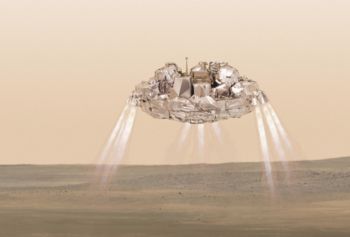 Mission control loses contact with Schiaparelli lander while sister craft successfully enters Martian orbit.
Mission control loses contact with Schiaparelli lander while sister craft successfully enters Martian orbit.
 Europe's probe feared lost on Mars, by Elizabeth Gibney, Nature, updated 20 Oct 2016. Europe's probe feared lost on Mars, by Elizabeth Gibney, Nature, updated 20 Oct 2016.
 Life on Mars! is a related local webpage. Life on Mars! is a related local webpage.
Alan Lightman and Dimitar Sasselov become Advisory Directors of the Astrobiology Research Trust (ART). Alan Lightman, a novelist, essayist, physicist, and educator, is Professor of the Practice of the Humanities at the Massachusetts Institute of Technology (MIT). Dimitar Sasselov is the Phillips Professor of Astronomy and the Director of the Origins of Life Initiative at Harvard University, and the author of The Life Of Super-Earths. Alan and Dimitar are more scientifically orthodox than ART's Trustee and founder, so they would add fair and balanced expectations to the research ART sponsors.
Lisa Jennings, the founder of CirQuest Labs and Director of the UTHSC Vascular Biology Center of Excellence at the University of Tennessee resigns after 14 years of generous, selfless service.  Thank you, Lisa! Thank you, Lisa!
Stan Franklin, W. Harry Feinstone Interdisciplinary Research Professor at the University of Memphis, remains on the Board. ART was founded in Memphis TN in 2002.
Astrobiology Research Trust supports scientific research in astrobiology and closely related fields, especially:
 Astrobiology research that is not already well funded by other sources, and Astrobiology research that is not already well funded by other sources, and
 Research in real or artificial life that may ascertain the range of macroevolutionary progress in quarantined systems. Research in real or artificial life that may ascertain the range of macroevolutionary progress in quarantined systems.
Cell-specific regulation of protein levels and activity is essential for the distribution of functions among multiple cell types in animals. ...many genes involved in these regulatory processes have a premetazoan origin.... We hypothesize that these pre-existing mechanisms in the protistan ancestors of animals constituted the molecular basis of a transition from temporal to spatial cell differentiation at the origin of Metazoa.
 High-Throughput Proteomics Reveals the Unicellular Roots of Animal Phosphosignaling and Cell Differentiation, by Arnau Sebé-Pedrós et al., doi:10.1016/j.devcel.2016.09.019, Developmental Cell, 13 Oct 2016. High-Throughput Proteomics Reveals the Unicellular Roots of Animal Phosphosignaling and Cell Differentiation, by Arnau Sebé-Pedrós et al., doi:10.1016/j.devcel.2016.09.019, Developmental Cell, 13 Oct 2016.
 Single-Celled Life Primed to Go Multicellular, by Bob Grant, The Scientist, 17 Oct 2016. Single-Celled Life Primed to Go Multicellular, by Bob Grant, The Scientist, 17 Oct 2016.
 Thanks, Ken Jopp. Thanks, Ken Jopp.
 Metazoan Genes Older Than Metazoa? and Metazoan Genes Older Than Metazoa? and  Genes Older Than Earth? are related webpages. Genes Older Than Earth? are related webpages.
| 17 Oct 2016 |
What'sNEW about HGT  | | |
...if they're right, then here's a bacterium that manipulates animals using animal genes found in a virus.

 The Virus With Spider DNA, by Ed Yong, The Atlantic (+Newswise), 11 Oct 2016; re: The Virus With Spider DNA, by Ed Yong, The Atlantic (+Newswise), 11 Oct 2016; re:
 Eukaryotic association module in phage WO genomes from Wolbachia, by Sarah R. Bordenstein and Seth R. Bordenstein, doi:10.1038/ncomms13155, Nature Communications, 11 Oct 2016. Eukaryotic association module in phage WO genomes from Wolbachia, by Sarah R. Bordenstein and Seth R. Bordenstein, doi:10.1038/ncomms13155, Nature Communications, 11 Oct 2016.
Image legend: (a) The eukaryotic cell can harbour multiple microbes capable of horizontal gene transfer. Genetic transfers between eukaryotes and bacteriophages can, in theory, occur (b) directly between eukaryotic chromosomes and phage genomes; (c) indirectly between eukaryotic and Wolbachia chromosomes; or (d) indirectly between eukaryotic chromosomes and intermediary entities, such as eukaryotic viruses and other intracellular bacteria.
 Viruses... has more about HGT. Viruses... has more about HGT.
 Thanks, Stan Franklin. Thanks, Stan Franklin.
| 13 Oct 2016 |
What'sNEW about HGT  | | |
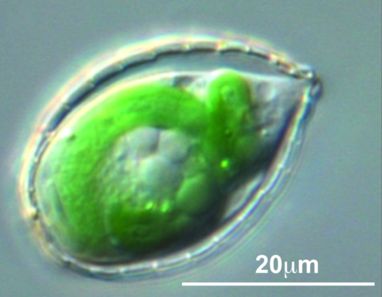 ...the microbial world... can move these genes between organisms according to need.
...the microbial world... can move these genes between organisms according to need.
 This Little Amoeba Committed Grand Theft, Rutgers University (+Newswise), 10 Oct 2016; re: This Little Amoeba Committed Grand Theft, Rutgers University (+Newswise), 10 Oct 2016; re:
 Gene transfers from diverse bacteria compensate for reductive genome evolution in the chromatophore of Paulinella chromatophora, by Eva C. M. Nowack et al., doi:10.1073/pnas.1608016113, PNAS, online 10 Oct 2016. Gene transfers from diverse bacteria compensate for reductive genome evolution in the chromatophore of Paulinella chromatophora, by Eva C. M. Nowack et al., doi:10.1073/pnas.1608016113, PNAS, online 10 Oct 2016.
 Viruses and Other Gene Transfer Mechanisms has more about HGT. Viruses and Other Gene Transfer Mechanisms has more about HGT.
|
Using this unique model, the researchers asked a critical question about endosymbiosis that had dogged scientists for many years. It has long been known that cells kept inside other cells can no longer share DNA with their own species and tend to build up a lot mutations in their genome, leading to their demise. This decay process is called Muller's ratchet. So how did the captured plastid escape the ratchet after millions of years of imprisonment? Analysis of Paulinella genomic data showed that every time it lost a gene, the amoeba replaced it with another gene with the same function from bacteria.
|
The presence of the ISB stromatolites demonstrates the establishment of shallow marine carbonate production with biotic CO2 sequestration by 3,700 million years ago..., near the start of Earth's sedimentary record. A sophistication of life by 3,700 Ma is in accord with genetic molecular clock studies placing life's origin in the Hadean eon....
(The immediate appearance of cellular life on Earth surprises standard darwinism and supports cosmic ancestry.)
 Rapid emergence of life shown by discovery of 3,700-million-year-old microbial structures, by Allen P. Nutman et al., doi:10.1038/nature19355, Nature, 22 Sep 2016; and commentary: Rapid emergence of life shown by discovery of 3,700-million-year-old microbial structures, by Allen P. Nutman et al., doi:10.1038/nature19355, Nature, 22 Sep 2016; and commentary:
 ...Evidence of life in Earth's oldest rocks, by Abigail C. Allwood, Nature, online 31 Aug 2016. ...Evidence of life in Earth's oldest rocks, by Abigail C. Allwood, Nature, online 31 Aug 2016.
 Metazoan Genes Older Than Metazoa? and Metazoan Genes Older Than Metazoa? and  Life Before 3850 Million Years Ago? are related local webpages. Life Before 3850 Million Years Ago? are related local webpages.
| 03 Oct 2016 |
What'sNEW about HGT  | | |
Scientists now recognize that microbes transfer DNA to the plants, fungi, and animals they infect or reside in, and conversely, human long interspersed elements (LINEs) have been found in bacterial genomes. Moreover, researchers have documented LGT from fungi to insects and from algae to sea slugs. There is reason to believe that any two major groups of organisms—including humans—can share their genetic codes.
 Bacteria and Humans Have Been Swapping DNA for Millennia, by Kelly Robinson and Julie Dunning Hotopp, The Scientist, 01 Oct 2016. Bacteria and Humans Have Been Swapping DNA for Millennia, by Kelly Robinson and Julie Dunning Hotopp, The Scientist, 01 Oct 2016.
 Viruses and Other Gene Transfer Mechanisms has more about LGT, aka HGT. Viruses and Other Gene Transfer Mechanisms has more about LGT, aka HGT.
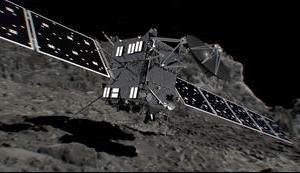 ...It's about how water and life may have come here — Mark McCaughrean, ESA Senior Advisor, talking about the mission to comet 67P/Churyumov-Gerasimenko. The Rosetta orbiter was intentionally, gently crashed onto the comet today (illustrated), ending the operational side of the mission.
...It's about how water and life may have come here — Mark McCaughrean, ESA Senior Advisor, talking about the mission to comet 67P/Churyumov-Gerasimenko. The Rosetta orbiter was intentionally, gently crashed onto the comet today (illustrated), ending the operational side of the mission.
 Mission Complete: Rosetta's journey ends in a daring descent to the comet, ESA, 30 Sep 2016. Mission Complete: Rosetta's journey ends in a daring descent to the comet, ESA, 30 Sep 2016.
 Rosetta Mission, homepage, ESA. Rosetta Mission, homepage, ESA.
 What'sNEW under Comet Rendezvous has links to Rosetta updates. What'sNEW under Comet Rendezvous has links to Rosetta updates.
 Comets... is a related local webpage. Comets... is a related local webpage.
...Sending out interstellar probes with the mission of bringing life to otherwise barren exoplanets — The Genesis Project is Claudius Gros's proposal to undertake directed panspermia to selected extrasolar planets. Gros, at the Institute for Theoretical Physics, Goethe University, Frankfurt, Germany, thinks multicellular life is rare and transitory. Therefore, we need to improve life's chances by identifying and colonizing suitable planets orbiting nearby stars. The goal of the Genesis mission is to fast forward the target planet to a precambrian state.
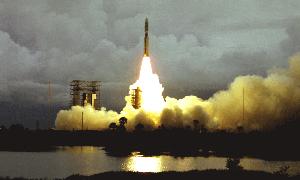 In a fanciful exercise twenty years ago, we suggested that a possible motivation to undertake directed panspermia would be the continuation of life elsewhere, if Earth were about to become uninhabitable. But we concluded that directed panspermia using rockets would be impractical, and that cometary panspermia, probably happening anyway, makes more sense. The Genesis Project differs in philosophy, emphasis and motivation. The writeup analyzes gaian processes in some detail. Of course, the proposal is controversial and ...unlikely to be funded soon.
In a fanciful exercise twenty years ago, we suggested that a possible motivation to undertake directed panspermia would be the continuation of life elsewhere, if Earth were about to become uninhabitable. But we concluded that directed panspermia using rockets would be impractical, and that cometary panspermia, probably happening anyway, makes more sense. The Genesis Project differs in philosophy, emphasis and motivation. The writeup analyzes gaian processes in some detail. Of course, the proposal is controversial and ...unlikely to be funded soon.
 Developing ecospheres on transiently habitable planets: the genesis project, by Claudius Gros, doi:10.1007/s10509-016-2911-0, Astrophysics and Space Science (+arXiv PDF), Oct (online 05 Sep) 2016. Developing ecospheres on transiently habitable planets: the genesis project, by Claudius Gros, doi:10.1007/s10509-016-2911-0, Astrophysics and Space Science (+arXiv PDF), Oct (online 05 Sep) 2016.
 A radical proposal..., by Neel V. Patel, Inverse.com, 26 Sep 2016. A radical proposal..., by Neel V. Patel, Inverse.com, 26 Sep 2016.
 Thanks, Google Alerts. Thanks, Google Alerts.
 How is it Possible? — our musings about directed panspermia and more. How is it Possible? — our musings about directed panspermia and more.
 Gaia is a related webpage. Gaia is a related webpage.
 Claudius Gros comments, 27 Sep 2016. Claudius Gros comments, 27 Sep 2016.
 Commentary by Kristin Houser and Brad Bergan, Futurism.com, 27 Nov 2017. Commentary by Kristin Houser and Brad Bergan, Futurism.com, 27 Nov 2017.
...The researchers found that horizontal gene transfer, not point mutation, was the primary diversification driver.
 MIT researchers prove fast microbial evolutionary bursts exist, by Marilyn Siderwicz, MIT News, 23 Sep 2016. MIT researchers prove fast microbial evolutionary bursts exist, by Marilyn Siderwicz, MIT News, 23 Sep 2016.
 Thanks, Google Alerts. Thanks, Google Alerts.
 Viruses... lists many examples of HGT. Viruses... lists many examples of HGT.
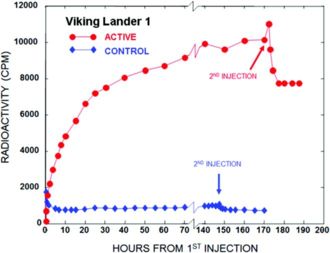 The 1976 Viking Labeled Release (LR) experiment was positive for extant microbial life on the surface of Mars.
The 1976 Viking Labeled Release (LR) experiment was positive for extant microbial life on the surface of Mars.
 The Case for Extant Life on Mars and Its Possible Detection by the Viking Labeled Release Experiment, by Gilbert V. Levin and Patricia Ann Straat, doi:10.1089/ast.2015.1464, Astrobiology, online 14 Sep 2016. The Case for Extant Life on Mars and Its Possible Detection by the Viking Labeled Release Experiment, by Gilbert V. Levin and Patricia Ann Straat, doi:10.1089/ast.2015.1464, Astrobiology, online 14 Sep 2016.
Graph: LR response to first and second nutrient injection in VL1 cycle 1 (active) and VL1 cycle 2 (160°C control).
 Life on Mars! has lots more about the Viking LR experiment. Life on Mars! has lots more about the Viking LR experiment.
Microbial Martians might well look like what lives in the rocks here at a deep underground mine.
 Visions of Life on Mars in Earth's Depths by Kenneth Chang, The New York Times, 12 Sep 2016. Visions of Life on Mars in Earth's Depths by Kenneth Chang, The New York Times, 12 Sep 2016.
 Thanks, Patsy Welch and Bob Sweeney. Thanks, Patsy Welch and Bob Sweeney.
 Life on Mars! and Life on Mars! and  Bacteria... have related info. Bacteria... have related info.
 High-molecular-weight organic matter in the particles of comet 67P/Churyumov–Gerasimenko by Nicolas Fray, Anaïs Bardyn et al., doi:10.1038/nature19320, Nature, online 07 Sep 2016; and commentary:
Rosetta Finds Solid Organic Matter in Dust Particles from 67P/Churyumov-Gerasimenko, Sci-News.com, 08 Sep 2016. High-molecular-weight organic matter in the particles of comet 67P/Churyumov–Gerasimenko by Nicolas Fray, Anaïs Bardyn et al., doi:10.1038/nature19320, Nature, online 07 Sep 2016; and commentary:
Rosetta Finds Solid Organic Matter in Dust Particles from 67P/Churyumov-Gerasimenko, Sci-News.com, 08 Sep 2016.
 Thanks, Kevin Keough. Thanks, Kevin Keough.
 What'sNEW under "Comet Rendezvous" has all our links about Rosetta. What'sNEW under "Comet Rendezvous" has all our links about Rosetta.
Darwin's theory of evolution and Chomsky's linguistics get rough treatment in The Kingdom of Speech by Tom Wolfe. If Darwin fails to account for humans, and if Chomsky explains little about language, Wolfe means to devastate them and have fun doing it. Now 86 years old, he is entertaining as ever, and even more cantankerous. Against Darwin he says, "there is a cardinal distinction between man and animal...." Speech is it. Furthermore, human language is not merely animal cries, and it does not come from a specialized organ in the brain. Instead, language is mnemonics.

We think humans are almost as special as Wolfe does, and we think the evolution of language is certainly intriguing. But Wolfe, in spite of himself, has not escaped the strictly Darwinian paradigm: "No one now knows...and there is no reason why anyone is likely to ever know...when it occurred to Homo sapiens to use words as mnemonics" (p 163, Wolfe's ellipses. He uses...lots of 'em.)
One may also wonder how, say, spider-web-weaving evolved, but we don't think one lucky spider stumbled onto it. It looks like an emergent property of the programming in spider genomes. Similarly, the size and complexity of the human genome would be sufficient to contain programming of which language is an emergent property. (And we notice that toddlers acquire language very readily.)
Still, the relatively abrupt appearances of speech, spider webs, and hundreds of evolutionary inventions need explaining. Of course, if pre-existing genetic programming is delivered to species in large chunks by horizontal gene transfer (HGT), as in cosmic ancestry, abrupt evolutionary advances make perfect sense. Examples supporting this scenario are rapidly accumulating. (Tom, can we interest you?)
Occasionally, it is fun to read a robust counter-opinion to orthodox darwinism. Especially if the writer is Tom Wolfe.
 The Kingdom of Speech by Tom Wolfe, ISBN-13: 9780316404624, Little, Brown and Company, 30 Aug 2016. The Kingdom of Speech by Tom Wolfe, ISBN-13: 9780316404624, Little, Brown and Company, 30 Aug 2016.
 Viruses... and Viruses... and  Neo-Darwinism... are related local webpages. Neo-Darwinism... are related local webpages.
 Book Reviews Book Reviews
 A SETI Signal? by Seth Shostak, SETI Institute, 30 Aug 2016. — False Alarm. A SETI Signal? by Seth Shostak, SETI Institute, 30 Aug 2016. — False Alarm.
 Thanks for an alert, Richard Hoover. Thanks for an alert, Richard Hoover.
Can antagonistic evolution compose de novo genes? Two geneticists from the British Isles ask this question in a probing new review. A de novo gene is one whose sequence, or the majority of it, was formerly silent, noncoding, presumably random, once termed "junk" DNA. McLysaght and Hurst first note that recognizing de novo genes is not straightforward, and they make a decision chart (pictured) for identifying and classifying them. They are one category of "new" genes, others being genes acquired by horizontal gene transfer and duplicated genes.

How de novo genes are composed is a disturbing problem for darwinists, because the genes apparently were not subject to natural selection prior to deployment. Yet many of them contain lengthy programming for new features or capabilities. Where does that come from?
McLysaght and Hurst suggest that, prior to deployment, de novo genes actually were subject to natural selection — by antagonistic evolution. This phenomenon is best exemplified by the rapid evolution of immune-related genes in a host defending against a parasite whose antigens also change rapidly. The process is analogous to frequently changing passwords to prevent unauthorized computer access.
Is antagonistic evolution a viable composer of new genetic prorams? We think not. In the immune-system and computer-password examples of it, the changing sequences have no programmatic content or purpose beyond simply matching, or not matching, the opponents' sequences. One can imagine illiterates at keyboards furiously competing against each other to compose and guess passwords. They may, incidentally, make a short, linguistically valid phrase, but not more. Besides, who would notice or care? (This is analogous to asking why de novo genes persist.)
Typical genes have around a thousand exonic nucleotides. In a recent analysis of de novo ones in humans and chimps, the median size was 595 nucleotides. McLysaght and Hurst do not consider the unlikelihood of meaningful random sequences so long. For ORF length, they mention lower recognition limits of only 99, or even only 30, nucleotides. And they write, "In the case of a de novo gene performing a novel function, a rare mutation that confers some fitness advantage may be relatively commonplace, as it only has to be better than nothing...." Seriously? Anyway, if antagonistic evolution could invent new programs, we think computer modelers would have demonstrated it by now.
McLysaght and Hurst give a darwinian response to a darwinian puzzle, and a good job at that. Antagonistic evolution is their main, but not their only, suggestion for de novo gene composing. The list of 126 references is a useful resource by itself. There's a lot to learn from the review. Still, we think the problem of "new" genes is severe enough to warrant consideration of a major amendment to the theory of evolution, such as cosmic ancestry.
 Open questions in the study of de novo genes: what, how and why by Aoife McLysaght and Laurence D. Hurst, doi:10.1038/nrg.2016.78, p 567-578 v 17, Nature Reviews Genetics, corrected version online 27 Jul 2016. Open questions in the study of de novo genes: what, how and why by Aoife McLysaght and Laurence D. Hurst, doi:10.1038/nrg.2016.78, p 567-578 v 17, Nature Reviews Genetics, corrected version online 27 Jul 2016.
 Conserved Non-Genic Sequences and Conserved Non-Genic Sequences and  ...De Novo Genes have related updates. ...De Novo Genes have related updates.
 A Wordcount for Comparison surveys a volume of abstracts about de novo genes and other new genes. A Wordcount for Comparison surveys a volume of abstracts about de novo genes and other new genes.
 4 Jan 2016: Thousands of human and/or chimpanzee-specific genes are derived from previously silent DNA. This article cites the recent analysis in humans and chimps mentioned above, also referenced by McLysaght and Hurst. 4 Jan 2016: Thousands of human and/or chimpanzee-specific genes are derived from previously silent DNA. This article cites the recent analysis in humans and chimps mentioned above, also referenced by McLysaght and Hurst.
 Computer Models of Evolution and Computer Models of Evolution and  The Evolution Prize... are two of several pages about computer models. The Evolution Prize... are two of several pages about computer models.
 Discussion about "meaning" in sequences providing immunity follows Example 8 on our page Macroevolutionary Progress Redefined...." Discussion about "meaning" in sequences providing immunity follows Example 8 on our page Macroevolutionary Progress Redefined...."
 Was Venus the First Habitable World of our Solar System? by M.J. Way et al., doi:10.1002/2016GL069790, Geophysical Research Letters, online 11 Aug 2016; and commentary: Was Venus the First Habitable World of our Solar System? by M.J. Way et al., doi:10.1002/2016GL069790, Geophysical Research Letters, online 11 Aug 2016; and commentary:
 NASA Climate Modeling Suggests Venus May Have Been Habitable by Michael Cabbage and Leslie McCarthy, NASA Goddard (+Newswise), 11 Aug 2016. NASA Climate Modeling Suggests Venus May Have Been Habitable by Michael Cabbage and Leslie McCarthy, NASA Goddard (+Newswise), 11 Aug 2016.
 Life on Europa, Other Moons, Other Planets? has links about possible life elsewhere in the solar system. Life on Europa, Other Moons, Other Planets? has links about possible life elsewhere in the solar system.
 The Venus Hypothesis: link to a paper by Dr Annabel Cartwright of Cardiff University, received 11 Aug 2016. The Venus Hypothesis: link to a paper by Dr Annabel Cartwright of Cardiff University, received 11 Aug 2016.
...Our result puts the probability of finding ourselves at the current cosmic time within the 0.1% level....

 Relative Likelihood for Life as a Function of Cosmic Time by Abraham Loeb, Rafael A. Batista and David Sloan, arxiv.org, version 2 pdf, revised 26 Jul 2016; and commentary: Relative Likelihood for Life as a Function of Cosmic Time by Abraham Loeb, Rafael A. Batista and David Sloan, arxiv.org, version 2 pdf, revised 26 Jul 2016; and commentary:
 Is Earthly Life Premature From a Cosmic Perspective? from CfA, Harvard (+Newswise), 1 Aug 2016.
Panspermia — not mentioned in the article or commentaries — would improve our chances! Is Earthly Life Premature From a Cosmic Perspective? from CfA, Harvard (+Newswise), 1 Aug 2016.
Panspermia — not mentioned in the article or commentaries — would improve our chances!
 Thanks, Stan Franklin, for pointing to related commentary: Thanks, Stan Franklin, for pointing to related commentary:
 Why are we now? by Stuart Gillespie, University of Oxford (+PhysOrg.com), 23 Aug 2016. Why are we now? by Stuart Gillespie, University of Oxford (+PhysOrg.com), 23 Aug 2016.
 The Astrobiology Primer v2.0 by Shawn D. Domagal-Goldman, Katherine E. Wright et al., doi:10.1089/ast.2015.1460, p 561-653 v 16, Astrobiology, 01 Aug 2016. The Astrobiology Primer v2.0 by Shawn D. Domagal-Goldman, Katherine E. Wright et al., doi:10.1089/ast.2015.1460, p 561-653 v 16, Astrobiology, 01 Aug 2016.
 The 2nd All-Russian Conference on Astrobiology in Moscow, 5-9 June, included a presentation by Richard Hoover (pictured) on the likelihood of life elsewhere in the solar system and evidence for microfossils in carbonaceous meteorites.
The 2nd All-Russian Conference on Astrobiology in Moscow, 5-9 June, included a presentation by Richard Hoover (pictured) on the likelihood of life elsewhere in the solar system and evidence for microfossils in carbonaceous meteorites.
 25 min. lecture with slides and 25 min. lecture with slides and
 7 min. Q&A session, videos on Youtube. 7 min. Q&A session, videos on Youtube.
 Richard Hoover: collected articles. Richard Hoover: collected articles.
|

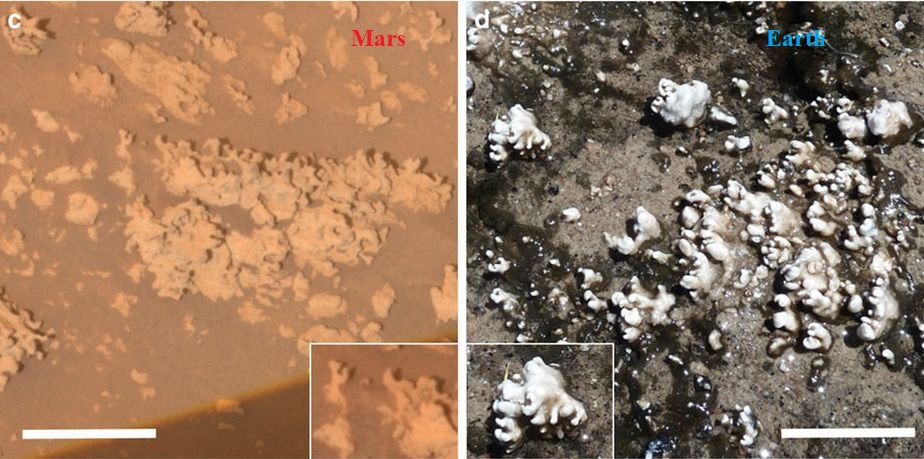
 Biologists long ago accepted that microbes can swap DNA, and they are now coming to terms with rampant gene flow among more complex creatures. ...just a few introgressed genes could have a very strong effect. Hybridization among animals may be as widespread and consequential as it is among plants.
Biologists long ago accepted that microbes can swap DNA, and they are now coming to terms with rampant gene flow among more complex creatures. ...just a few introgressed genes could have a very strong effect. Hybridization among animals may be as widespread and consequential as it is among plants. Most people accept evolution; even creationists accept microevolution. If we start getting macroevolution in the lab, then they'll accept the macroevolution.... The scientists should be saying, "Prove it. Do it in the lab." — Harvard Medical School Professor of Genetics George Church, 2007
Most people accept evolution; even creationists accept microevolution. If we start getting macroevolution in the lab, then they'll accept the macroevolution.... The scientists should be saying, "Prove it. Do it in the lab." — Harvard Medical School Professor of Genetics George Church, 2007 Everywhere we went he received standing ovations. Sometimes even before he spoke, remembers James Lovelock's wife, Sandy, after his tour of American universities in 2006. It seems that Gaia has achieved respectability and Lovelock's attention to the biosphere has become mainstream. How stabilizing Gaian processes may have originated still puzzles even Gaia's adherents, but we think this concern is misplaced. More importantly, stabilizing feedback loops have limits and reach tipping points. These and the imminent danger of a rapidly changing environment are well emphasized in a 2009 biography by veteran science writers. We were pleased to read it and delighted to better know James Lovelock.
Everywhere we went he received standing ovations. Sometimes even before he spoke, remembers James Lovelock's wife, Sandy, after his tour of American universities in 2006. It seems that Gaia has achieved respectability and Lovelock's attention to the biosphere has become mainstream. How stabilizing Gaian processes may have originated still puzzles even Gaia's adherents, but we think this concern is misplaced. More importantly, stabilizing feedback loops have limits and reach tipping points. These and the imminent danger of a rapidly changing environment are well emphasized in a 2009 biography by veteran science writers. We were pleased to read it and delighted to better know James Lovelock.

 ...the microbial world... can move these genes between organisms according to need.
...the microbial world... can move these genes between organisms according to need.




 The 2nd All-Russian Conference on Astrobiology in Moscow, 5-9 June, included a presentation by Richard Hoover (pictured) on the likelihood of life elsewhere in the solar system and evidence for microfossils in carbonaceous meteorites.
The 2nd All-Russian Conference on Astrobiology in Moscow, 5-9 June, included a presentation by Richard Hoover (pictured) on the likelihood of life elsewhere in the solar system and evidence for microfossils in carbonaceous meteorites.
 In a fanciful exercise twenty years ago, we suggested that a possible motivation to undertake directed panspermia would be the continuation of life elsewhere, if Earth were about to become uninhabitable. But we concluded that directed panspermia using rockets would be impractical, and that cometary panspermia, probably happening anyway, makes more sense. The Genesis Project differs in philosophy, emphasis and motivation. The writeup analyzes gaian processes in some detail. Of course, the proposal is controversial and ...unlikely to be funded soon.
In a fanciful exercise twenty years ago, we suggested that a possible motivation to undertake directed panspermia would be the continuation of life elsewhere, if Earth were about to become uninhabitable. But we concluded that directed panspermia using rockets would be impractical, and that cometary panspermia, probably happening anyway, makes more sense. The Genesis Project differs in philosophy, emphasis and motivation. The writeup analyzes gaian processes in some detail. Of course, the proposal is controversial and ...unlikely to be funded soon.